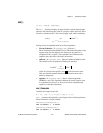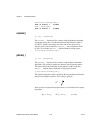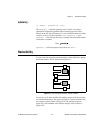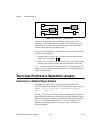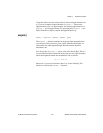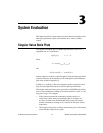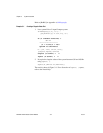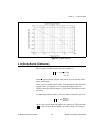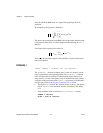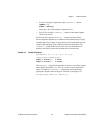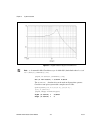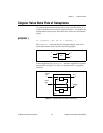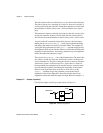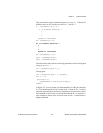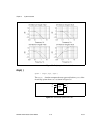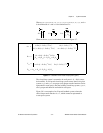
Chapter 3 System Evaluation
MATRIXx Xmath Robust Control Module 3-4 ni.com
factor by which the RMS value of a signal flowing through H can be
increased.
By comparison, the H
2
norm is defined as:
This norm can be interpreted as the RMS value of the output when the input
is unit intensity white noise. It can be computed in Xmath using the
rms( )
function.
For discrete-time systems with a stable H,
where is the maximum singular value and H(e
jω
) is the transfer matrix
under consideration.
linfnorm( )
[sigma, vOMEGA] = linfnorm( Sys, {tol,maxiter} )
The linfnorm( ) function computes the L
∞
norm of a dynamic system
using a quadratically convergent algorithm. The
linfnorm( ) function
relies on eigenvalue calculations of a Hamiltonian matrix with twice as
many states as
Sys and, consequently, may be unreliable for large systems.
A singular value plot created with
svplot( )can be used as an alternative
in these cases. Refer to the Singular Value Bode Plots section.
• The keyword
tol controls the required relative accuracy. The default
is 0.01.
maxiter is the maximum number of iterations. The default
is 15.
• If the maximum norm is found at ω = ∞,
linfnorm( ) returns:
vOMEGA = Infinity
sigma = gain at infinity.
H
2
1
2π
------
σ
i
Hjω()()
2
i 1=
k
∑
∞–
∞
∫
= dw
H
∞
max
ωππ,–()∈
σ He
jω
()()=
σ



